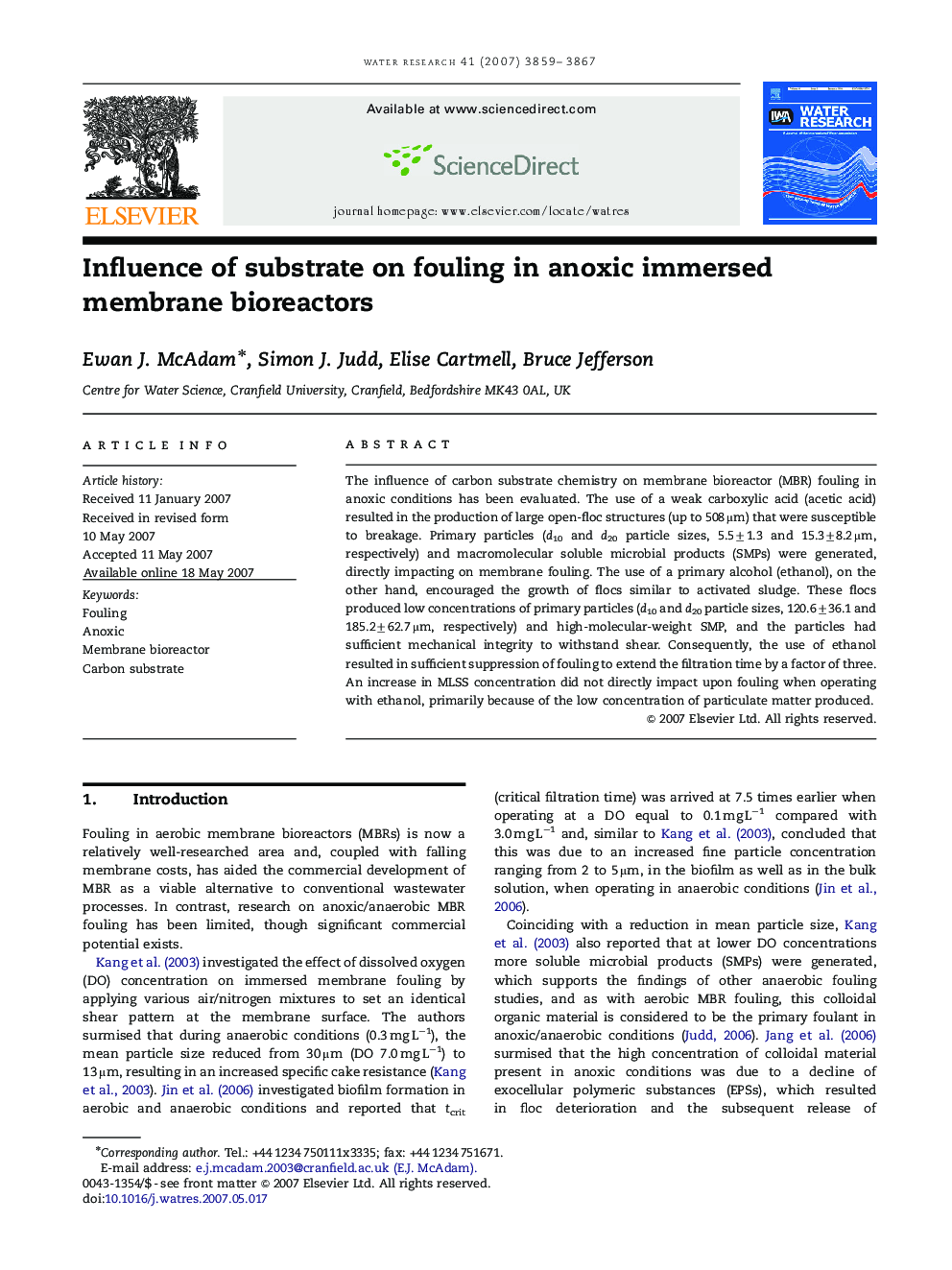| Article ID | Journal | Published Year | Pages | File Type |
|---|---|---|---|---|
| 4486072 | Water Research | 2007 | 9 Pages |
The influence of carbon substrate chemistry on membrane bioreactor (MBR) fouling in anoxic conditions has been evaluated. The use of a weak carboxylic acid (acetic acid) resulted in the production of large open-floc structures (up to 508 μm) that were susceptible to breakage. Primary particles (d10 and d20 particle sizes, 5.5±1.3 and 15.3±8.2 μm, respectively) and macromolecular soluble microbial products (SMPs) were generated, directly impacting on membrane fouling. The use of a primary alcohol (ethanol), on the other hand, encouraged the growth of flocs similar to activated sludge. These flocs produced low concentrations of primary particles (d10 and d20 particle sizes, 120.6±36.1 and 185.2±62.7 μm, respectively) and high-molecular-weight SMP, and the particles had sufficient mechanical integrity to withstand shear. Consequently, the use of ethanol resulted in sufficient suppression of fouling to extend the filtration time by a factor of three. An increase in MLSS concentration did not directly impact upon fouling when operating with ethanol, primarily because of the low concentration of particulate matter produced.
